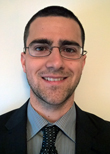Emission Simulation for Power Electronics Printed Circuit Boards
Click here to download a copy of the presentation.
Overview:
The conducted and radiated emission of a switched mode power supply continues to be a challenge for both the designer and the engineers implementing these devices into their systems, especially with the trend towards smaller form factor and faster switching speeds. 3D EM simulation can be an extremely helpful tool for investigating, debugging and solving the common EMI issues that are encountered with these devices. In this webinar, we will look at a few examples of how 3D field-circuit coupled workflows make such simulations not only possible, but practical and accurate. Specifically, we’ll consider the conducted emission of a motor control and a DC-DC converter for automotive applications, as well as the radiated emission of a DC-DC converter and the potential coupling to automotive AM/FM antennas.
Who Should Attend:
All design engineers interested in simulation methods
 Speaker: Patrick Deroy
Speaker: Patrick Deroy
Patrick DeRoy completed B.S. (2011) and M.S. (2012) degrees in Electrical Engineering from the University of Massachusetts Amherst. His Master’s work focused on cable shielding and transfer impedance modeling using CST STUDIO SUITE and validating simulation results with measurements. He is Application Engineer at CST of America, supporting customers modeling EMC problems including ESD, radiated emissions and BCI. He is also interested in the simulation of PCBs and mitigation of EMI for such structures.
The following are questions presented to the speaker by the attendees during the webinar, along with answers to each.
Select each question to view the corresponding response.
Does the simulation make use of the NEC simulation engine?
Answer: No it does not. CST STUDIO SUITE contains several different numerical methods, or solvers, which can be applied to different types of EM applications. Please visit our website for more information.
How long would it take a typical user to reach the first level of effectiveness with CST? Or, how does the user expedite the learning curve?
Answer: CST STUDIO SUITE is known for its ease of use and this helps a new user get up to speed very quickly. A big part of expediting the learning curve is the training we offer along with the support we provide. New customers typically attend a training class, varying 2-3 days, and you can always contact our technical support team and application engineers for help while using a maintained license of the software. Our Application Engineers are experts in their respective fields, and we pride ourselves on providing fast and thorough support to our customers. We truly enjoy helping them learn how to use our software and simulation in general to improve their designs and products.
Do you have other layout suggestions/simulations to reduce electric and magnetic field without using a metal shield that limits airflow around the typically hottest parts (switch node MOSFETs and Inductor)?
Answer: An electrically conductive shield is proven to reduce the emissions, however this may not be an option due to thermal management. One could also experiment with a wire mesh instead of a full metal sheet for the shielding, which may be sufficient and allow better airflow. For the PCB layout itself, current loops carrying AC (switched) current should be kept small and similarly the area of copper planes or traces with AC (switched) voltage must also be kept small (to minimize capacitance with PCB reference plane). Both can increase EMI.
What are the simulation rendering times typically?
Answer: Simulation times can vary quite a lot depending on hardware and also the complexity of your model, from seconds to a few minutes all the way to several hours. That being said, the examples I showed in this webinar were relatively simple actually. The motor control PCB model, for instance, completes the 3D simulation in about 1 hour and the Schematic simulations afterwards can run from seconds to several minutes depending on the analysis to be performed. All simulations can be accelerated with the proper hardware. Please see our website for recommended hardware.
Can you model common and differential CE and resultant RE102 for SWPS?
Answer: Yes, the beauty of modeling within CST STUDIO SUITE is you are not limited to one setup vs. another, or any particular situation. It is a general purpose simulation tool so you can easily set up common or differential, or model both, and modify your model accordingly to whichever specific standard or result you are interested in.
